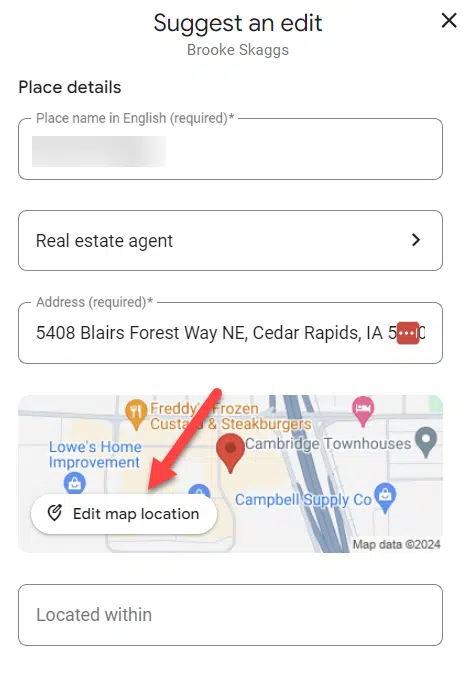Did you know that 82% of smartphone users consult their phones before making financial decisions? This staggering statistic highlights just how crucial SEO has become for fintech companies in our digital age.
Fintech SEO is all about optimizing your online presence to attract potential customers searching for financial products and services. It’s not just about being visible, it’s about being the go-to source when people need financial solutions.

That’s why, in today’s article, we’ll explain the top 10 fintech SEO trends you can’t afford to miss in 2024 if you want to stay ahead in this competitive industry.
How the Fintech Industry Has Evolved Over the Years & How to Adapt Your SEO Strategy with It
The Rise of Niche Fintech Solutions
Fintech is no longer one-size-fits-all. We’re seeing a boom in specialized services catering to specific needs. This shift means your SEO strategy needs to evolve too.
Instead of casting a wide net, focus on long-tail keywords that speak directly to your niche audience. For example, if you’re a robo-advisor for young professionals, target phrases like “best investment apps for millennials” or “automated saving tools for first-time investors.”
Security Concerns and Building Trust
In the world of finance, trust is everything. With data breaches making headlines, people are more cautious than ever about where they put their money. Your Fintech SEO strategy should reflect your commitment to security.
Highlight your security certifications and data encryption practices in your content. Create blog posts or landing pages that explain your security measures in simple terms. Use keywords like “secure online banking” or “encrypted financial transactions” to attract safety-conscious users.
The Integration of Fintech with Traditional Finance
The lines between fintech and traditional banking are blurring. Many users are transitioning into digital finance while still relying on traditional banks. Your content should bridge this gap.
Create guides that explain how your fintech solution complements or improves upon traditional banking services. Use comparisons and case studies to show the benefits of your platform. This approach helps build trust with users who might be hesitant about fully embracing fintech.
Top 10 Fintech SEO Trends for 2024
1. Voice Search Optimization for Natural Language Queries
Voice search is changing how people look for financial information. Instead of typing “best savings accounts,” they might ask their smart speaker, “What’s the highest interest rate I can get on a savings account?”
To optimize for voice search, focus on natural language and question-based keywords. Create FAQ sections that directly answer common queries. Structure your content to provide clear, concise answers that voice assistants can easily pick up.
2. Content Marketing for User Education and Lead Generation
In fintech, educated customers are your best customers. Use content marketing to explain complex financial concepts and showcase your solutions.
Create a mix of content types. Use explainer videos for complex topics like blockchain or AI in finance. Develop interactive quizzes to help users find the right financial products for their needs. Share case studies that highlight real customer success stories.
Don’t forget to promote your content. Use social media to share bite-sized financial tips. Collaborate with finance influencers to reach new audiences. Build an email list to share your latest insights directly with interested users.
3. Mobile-First Indexing
With Google’s mobile-first indexing, your mobile site is now your primary site. This is especially crucial in fintech, where users often check their finances on the go.
Start by auditing your mobile site. Check load times, responsiveness, and user experience on different devices. Compress images and minify code to improve speed. Ensure all features, from calculators to application forms, work smoothly on mobile.
For fintech apps, don’t neglect app store optimization (ASO). Craft compelling app titles and descriptions. Use relevant keywords that potential users might search for in app stores.
4. Prioritizing User Experience (UX) for Improved Rankings
Search engines are getting better at measuring user experience, and it’s impacting rankings. In fintech, where users are handling sensitive financial data, a smooth UX is non-negotiable.
Focus on intuitive navigation. Users should easily find what they’re looking for, whether it’s account information or investment options. Optimize your site’s loading speed – every second counts when users are trying to check their finances.
Conduct A/B tests on different design elements. Try various layouts for your homepage or different color schemes for your call-to-action buttons. Small changes can lead to big improvements in user engagement.
5. Building Trust with E-A-T Optimization
In fintech, Expertise, Authoritativeness, and Trustworthiness (E-A-T) are paramount. Google wants to ensure it’s recommending reliable sources, especially for financial information.
Showcase your expertise through high-quality, informative content. Write in-depth guides on financial topics relevant to your niche. Share insights from your team’s financial experts.
Build authority by highlighting your credentials. Display any industry certifications or awards prominently on your site. Encourage satisfied customers to leave reviews on trusted platforms.
Develop thought leadership content. Have your company leaders write guest posts for respected finance publications. Share their insights on your blog and social media channels.
6. The Power of AI and Machine Learning in SEO
AI isn’t just changing fintech products; it’s revolutionizing SEO too. Machine learning algorithms are getting better at understanding user intent and delivering personalized results.
Use AI-powered tools for competitor analysis and keyword research. These can uncover hidden opportunities and trends in your niche. For content creation, AI can help identify topics your audience is interested in and even suggest content structures.
Use machine learning to tailor your website experience based on user behavior. For example, show investment products to users who frequently read about stocks, or highlight savings accounts for those interested in budgeting tips.
7. Data-Driven Decisions for Continuous Improvement
In fintech SEO, guesswork won’t cut it. You need to base your strategies on solid data.
Start by tracking key metrics like organic traffic, conversion rates, and keyword rankings. Tools like Google Analytics and Search Console are great starting points.
Don’t just collect data, act on it. If you notice certain blog posts are performing well, create more content on those topics. If your bounce rate is high on mobile, investigate and improve your mobile user experience.
8. Local SEO for Brick-and-Mortar Fintech Branches
Even in the digital age, many fintech companies maintain physical locations. Local SEO helps you connect with customers in your area.
Optimize your Google My Business profile. Keep your business hours, contact information, and services up-to-date. Encourage satisfied customers to leave reviews – they’re gold for local SEO.
Create location-specific content. Write blog posts about local financial news or events. Use location-based keywords like “best savings accounts in [city name]” or “financial advisors near me” in your content.
9. Niche Fintech Solutions and Long-Tail Keywords
As fintech becomes more specialized, so should your keyword strategy. Long-tail keywords might have lower search volumes, but they often have higher conversion rates.
Conduct thorough keyword research to find specific phrases your niche audience is using. If you offer peer-to-peer lending for small businesses, target keywords like “fast business loans for startups” or “alternative financing for e-commerce businesses.”
Create in-depth content that addresses the specific pain points of your niche. If you’re targeting freelancers, write guides on managing irregular income or saving for taxes as a self-employed individual.
10. The Rise of Video SEO for Engaging Content
Video content is booming, and fintech is no exception. People often prefer watching a quick explainer video to reading a long article, especially for complex financial topics.
Create high-quality videos that explain your products or services. Use animation to break down complex concepts like blockchain or robo-investing. Share customer testimonials to build trust and showcase real-world applications of your fintech solutions.
Optimize your videos for search. Use relevant keywords in your video titles, descriptions, and tags. Create transcripts for your videos.
Final Words
Remember, SEO isn’t just about algorithms, it’s about understanding and serving your users. Focus on creating valuable, trustworthy content and providing an excellent user experience. Combine these fundamentals with the trends we’ve discussed, and you’ll be well-positioned for SEO success in not just 2024, but for years to come.




